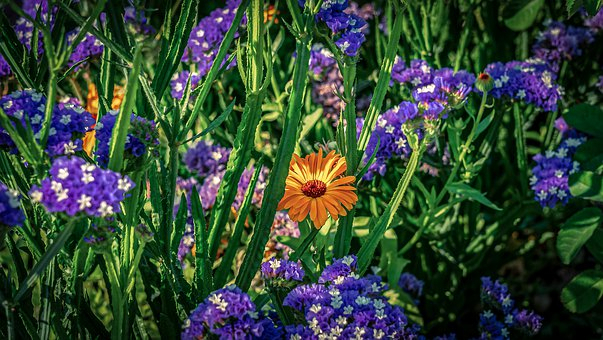
As you walk through 500,000 plant species in the world, it might not be clear to everyone that all of them evolved from a common ancestor. This is a real "leap in biodiversity" that has been explored by a global team of scientists from Martin Luther University Halle-Wittenberg. All of them display their unique projects related to plant growth and evolution. Dipping into genetic data from 1,147 species, scientists have created the large evolutionary tree for green plants.
Scientists traced back the history and evolution of plants to one billion years ago, from the initial organisms that harnessed solar energy with the help of chloroplasts and underwent photosynthesis. Today's 500,000 plant species include aquatic as well as terrestrial plants. The aim of the study in Nature was to unspool its genetic foundations. "Some species began to emerge and evolve several hundreds of millions of years ago. However, today we have the tools to look back and see what happened at that time," explains plant physiologist Professor Marcel Quint from the Institute of Agricultural and Nutritional Sciences at MLU.
Heading a sub-project with bioinformatician Professor Ivo Grosse, also from MLU, Quint is pioneering the "One Thousand Plant Transcriptomes Initiative." This is an international network of 200 researchers. About 1,147 land plant and algae species were collected so that the team could explore the genome-wide gene expression patterns of each organism. This was called the transcriptome. The researchers used the information to examine the evolution and development of plants and the growth of individual species. The emphasis has been on plant species that have not been examined yet, including a number of algae, moss and flowering plants.
"This was a very special project because we did not just analyse individual components, but complete transcriptomes, of over one thousand plants, providing a much broader foundation for our findings," explains Ivo Grosse. The sub-project led by MLU scientists looked at the development and expansion of large gene families in plants. "Some of these gene families have duplicated over the course of millions of years. This process might have been a catalyst for the evolution of plants: Having significantly more genetic material might unleash new capacities and completely new characteristics," says Marcel Quint.
The central goal of the project was to locate a potential link between genetic duplications and main innovations in the plant kingdom, including development of flowers and seeds. Research was conducted by Quint and Grosse in collaboration with scientists from Marburg, Jena, Cologne and the Max Planck Institute for Evolutionary Biology in Plön. Most of the analyses were undertaken by Martin Porsch, a Ph.D. student in the lab of Ivo Grosse.

With the vast dataset, a new evolutionary tree for plants was designed, showing that an earlier assumption based on the plant evolution was incorrect. "We used to think that the greatest genetic expansion had occurred during the transition to flowering plants. After all, this group contains the majority of existing plant species today," says Martin Porsch.
The information points the way toward a genetic foundation for the expansion of biodiversity, which was set up earlier. "The transition from aquatic to terrestrial plants was the starting point for all further genetic developments. This development was the greatest challenge for plants, and so they needed more genetic innovations than ever before," continues Porsch. "We found an enormous increase in genetic diversity at the time of this transition, after that it reached a plateau. From this time on, almost all of the genetic material was available to drive evolutionary progress and generate the biodiversity we see today," concludes Ivo Grosse.









